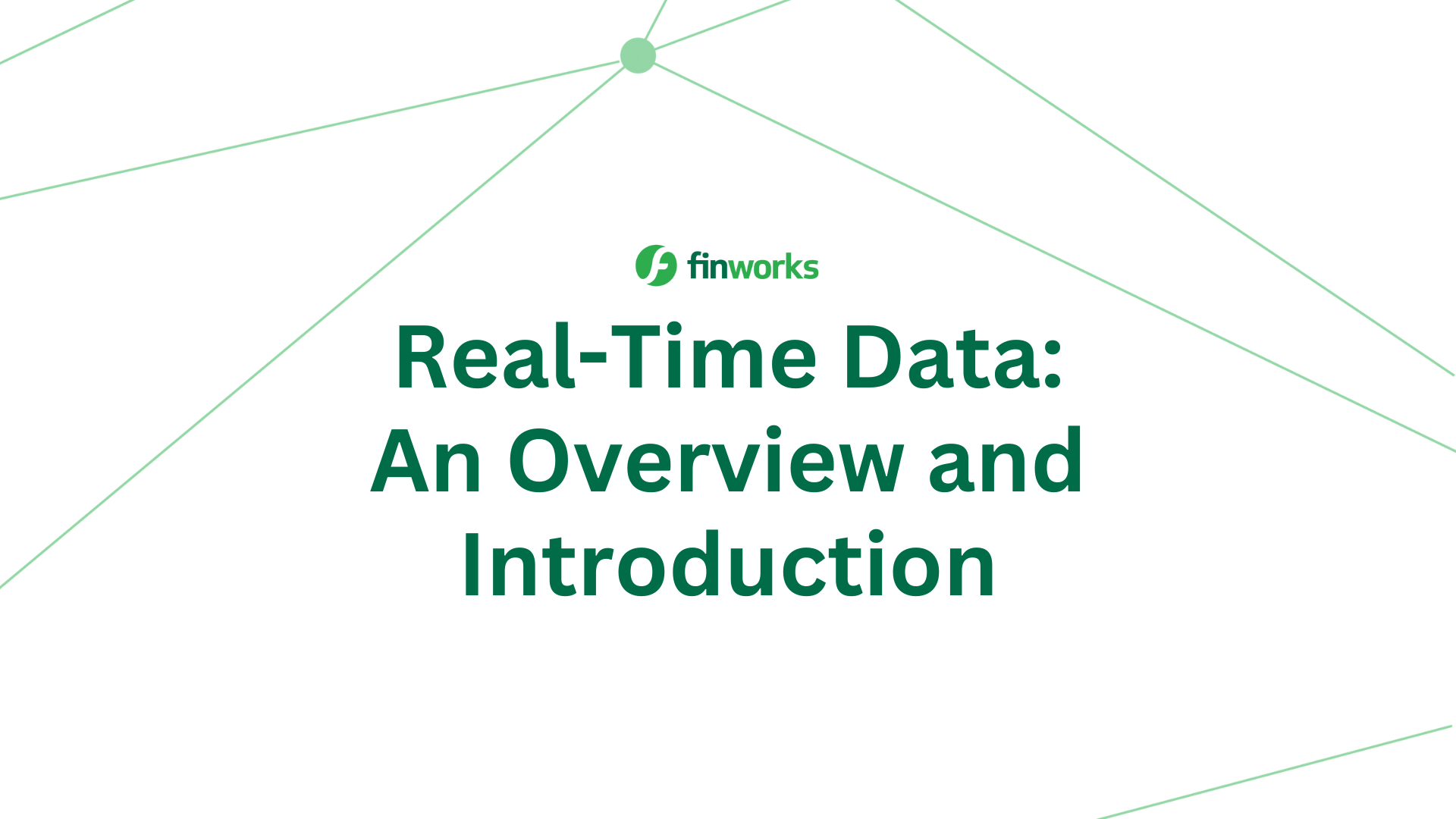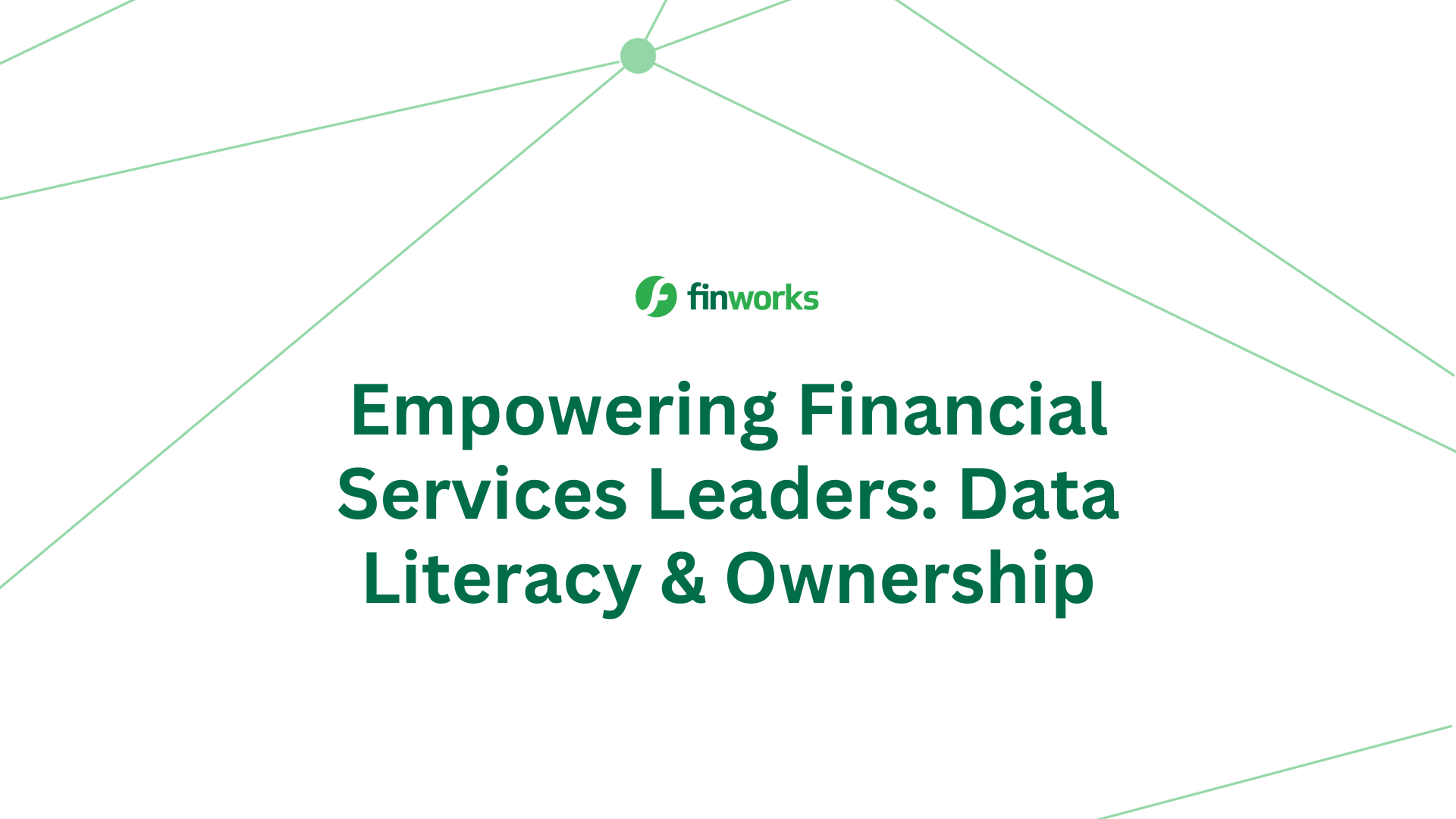A Guide to Timely Data Access: How to Make Real-Time a Reality
Real-time data holds immense value for businesses in a landscape where we generate 328.77 million terabytes of data daily, according to the estimate. Storing outdated information not only incurs costs but also reflects the shrinking lifespan of data.
Accessing and leveraging data in real-time has become critical in driving informed decisions, enhancing operational efficiency, and delivering exceptional user experiences. This guide takes you through the strategies, technologies, and implications surrounding transforming real-time from a concept into a potent reality.
What is Real-Time Data?
Real-time data refers to information that becomes instantly available for use as soon as it is collected. The usage of real-time data is easily experienced in modern technologies that deliver up-to-the-minute data to apps used on personal or business-related devices.
Real-time data operates on the premise that it is not held in silos. Instead, it proceeds directly to the final user. This does not imply that the data reaches the user immediately. Real-time data means that data is not held back when it is collected.
How Does Real-Time Data Work?
Real-time data enables ultra-fast, uninterrupted data analytics, with a brief timeframe from data reception to its transmission to the final destination. However, this process involves four key stages:
1. Capture of Streaming Data
Dynamic live data streams are gathered through mechanisms such as scrapers (automated tools for web data extraction), collectors (applications that gather and deliver analysed meta-data), agents (utilised for collecting extensive data volumes), and listeners (programs alerted about new data before it reaches the backend).
2. Stream Processing of Data
The next step involves streaming data processing through various techniques, including segmentation, integration, computational operations, and establishing connections with external data sources. A robust database system should facilitate this phase. Often, following this stage, the data becomes ready for the visualisation aspect. However, emerging technologies now enable real-time data visualisation without the necessity of preliminary database interactions.
3. Visualisation of Processed Data
Once data has been processed, it is retrieved by the visualisation component. Internal business intelligence (BI) systems will include a charting library for visualisation. The visualisation component reads data from the structured data file and generates charts, gauges, and other visualisation types linked to the user interface.
4. From Visualisation to the Real-Time Dashboard
The JSON or XML file undergoes regular updates, called the update interval, to ensure the data remains accurate. The refresh interval refers to the frequency at which the recipient client retrieves the processed data. If a stock trading programme employs data and visualisations, it can activate predetermined rules in response to the insights derived from the streaming data.
The previous process occurs within a brief timeframe of milliseconds, facilitated by advancements in database technology. Query tools facilitate the process. The expansion of visualisation tools has been driven by the increasing requirements of many scenarios that necessitate real-time data. This growth has facilitated the development of a dynamic ecosystem of real-time analytics, catering to a wide array of big data applications.
Scenarios Where Real-Time Data Helps
Real-time data introduces transformative possibilities across diverse industries, reshaping how businesses operate and respond to data-driven changes.
Finance and Banking
Traders and investors rely on up-to-the-second stock prices and market trends to make split-second decisions. With real-time data streaming, they can adjust their investment strategies, buy or sell stocks, and manage portfolios promptly. Furthermore, banks utilise real-time transaction data to detect potentially fraudulent activities in real-time. If an unusual transaction is detected, an alert is triggered, allowing immediate action to prevent financial losses.
Healthcare
Patient monitoring systems equipped with sensors continually measure vital signs like heart rate, blood pressure, and oxygen levels. Doctors and nurses can closely monitor patients' conditions and receive instant alerts if any values deviate from the normal range. This allows for timely medical interventions, especially critical in intensive care units. Additionally, wearable devices provide real-time health data for patients with chronic illnesses, enabling them and their healthcare providers to manage their conditions proactively.
Manufacturing
The manufacturing sector relies on real-time data to optimise production processes and ensure quality control. Imagine a factory equipped with sensors that monitor equipment performance and product quality. If a machine malfunction or a quality issue arises, real-time alerts are sent to maintenance personnel and supervisors, who can then take immediate action. This minimises downtime, reduces defects, and maximises overall operational efficiency. Additionally, real-time data helps demand forecasting, allowing manufacturers to adjust production levels based on current market conditions.
Government
Real-time data integration from immigration databases, watchlists, and biometric systems allows immigration officers to verify travellers' identities and backgrounds. Facial recognition technology instantly matches faces to databases, identifying individuals of interest. This real-time data processing accelerates immigration procedures, enhances border security, and ensures compliance with immigration regulations. Additionally, real-time data analytics helps identify patterns of illegal immigration, human trafficking, or security threats, enabling swift intervention and prevention measures.
How to Implement a Real-Time Data Analytics Strategy
Explore the following key stages to seamlessly integrate real-time data analytics into your organisational framework.
1. Understand What Your Company Needs
Begin by comprehending the specific needs and objectives of your organisation. Identify key areas where real-time insights can make a difference, such as customer service, operational efficiency, or decision-making. Collaborate with stakeholders to define clear goals and expectations that your real-time data analytics strategy should address.
2. Pinpoint Your Data Sources
Identify and locate the diverse data sources fuelling your real-time data analytics initiative. These sources may encompass customer interactions, sensor data from IoT devices, transaction records, and more. Ensure a streamlined approach to collecting, processing, and integrating data from these sources to maintain a continuous and accurate data flow.
3. Build Your Data Infrastructure
Build a robust data infrastructure to accommodate real-time data analytics complexities. Select appropriate technologies, tools, and platforms that align with your organisation’s requirements. This includes choosing data storage solutions, implementing data processing frameworks, and integrating various data components. Develop an architecture that facilitates seamless data movement, processing, and storage while upholding data security and compliance standards.
4. Implement Real-Time Data Processing
Execute a robust real-time data processing framework. Deploy technologies like stream processing platforms that enable the continuous analysis of incoming data streams. Design and configure data pipelines that cleanse, transform, and enrich the data in real-time. Ensure the processing system can handle high data velocity while maintaining accuracy and reliability.
5. Utilise Advanced Analytics Techniques
Leverage sophisticated analytics techniques to extract deeper insights from your real-time data. Apply machine learning algorithms, predictive models, and data mining techniques to uncover patterns, anomalies, and trends. Utilise real-time analytics to promptly make informed, data-driven decisions and optimise various aspects of your business operations.
6. Monitor and Refine Your Strategy
Continuously monitor the performance and impact of your real-time data analytics strategy. Set up monitoring tools to track data processing speed, accuracy, and system health. Regularly review key performance indicators (KPIs) to assess the effectiveness of your strategy in meeting business objectives. Based on the insights gained, refine and adjust your strategy to ensure ongoing alignment with organisational goals and evolving data needs.
Manage Your Real-Time Data Access with Finworks
Establishing a single source of truth and real-time data access capabilities is vital for most organisations. Developing an internal data pipeline solution can be challenging however, Finworks offers a streamlined solution for all your data transfer and data transformation requirements.
Finworks Data Management is a no-code solution that facilitates the process of data ingestion from multiple sources, including commonly utilised databases and software-as-a-service (SaaS) platforms as well as specialised data streaming sources. We efficiently transfer your data to a highly secure central repository and allow self-service functions such as workflow, scheduling and monitoring through a user-friendly interface.
Get ready to empower your organisation with the true potential of real-time data. Contact us to learn more from our experts.




